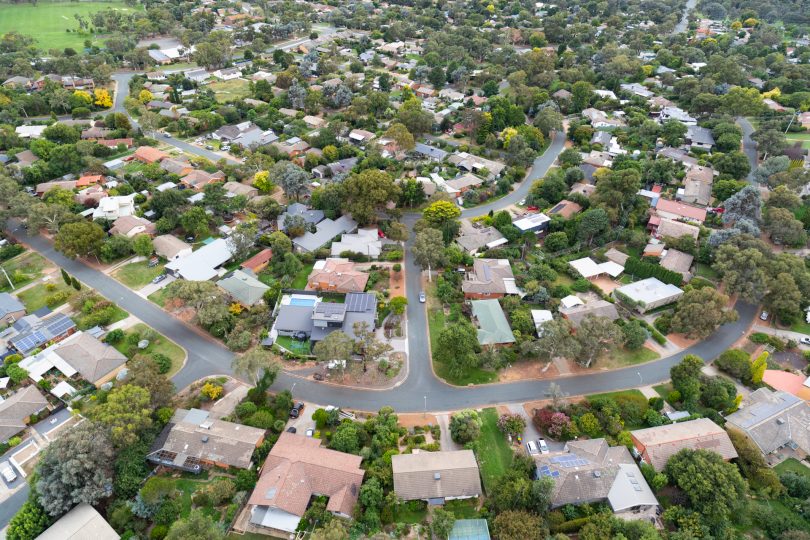

An independent analysis of the Territory Budget has declared the ACT Government’s tax settings and land supply are contributing to higher prices. Photo: Michelle Kroll.
The Territory Government denies its tax settings and land release schedule have led to an increase in housing costs, despite that assertion being made in an independent analysis of the budget. It defended its commitment to affordable housing, its capacity to service debt and its population forecasts in its response to the Pegasus Review of the 2022-23 ACT Budget, completed as part of the estimates process. The review stated budget and land supply settings have contributed to people in the ACT experiencing difficulties accessing housing. It also argued land tax was being passed on to prospective renters in the form of higher rental prices.
“Distortions in the income tax system have contributed to increased prices for houses and units across most of Australia,” the Pegasus report said. “There is also evidence to suggest that demand for land in the ACT vastly exceeds supply, adding to the pressure on prices arising from the income tax system. “If the supply of residential land is constrained, resulting in relative scarcity, this, in turn, will put upward price pressure on residential land. “As a major input into the price of residential property, relative scarcity in the supply of residential land can also be expected to feed into higher residential property prices.” Industry stakeholders have previously agreed with this analysis, accusing the government of “drip-feeding” land to the market.
The ACT Government was extremely critical of this analysis, arguing the report had provided “limited evidence” to support that last claim. Instead, it argued strong house price growth in the Territory and across the country had been driven by “supportive fiscal policies and unprecedented expansionary monetary policy, including record low interest rates”.
It added that land release was a small part of the total volume of all property transactions.“The number of properties being sold in 2021-22 was under 9 per cent of the total dwelling stock. The number of dwellings increased by around 3 per cent from new constructions.”
The Canberra Liberals have repeatedly called on the government to drastically increase the supply of land to the ACT housing market, using examples of heavily oversubscribed land ballots to illustrate their points. But the government hits back at this, saying “simple solutions” to the housing crisis don’t exist and increasing land supply now would mean the construction industry would not be able to keep up with demand. Its response to Pegasus also argued there were significant costs associated with developing new land. The government also hit back at arguments in the Pegasus report that its land tax regime was making renting unaffordable in the ACT. “The key reason for increases in rental prices is a function of low rental vacancy rates, due to strong population growth,” its response said.
“Rents are now rising in many states across Australia, where many areas are now also experiencing vacancy rates of just above zero.”
The ACT’s vacancy rate hit extreme lows of 0.5 per cent in March this year. Canberra is consistently among the most expensive cities in the country to rent. In budget estimates on Monday (29 August), Mr Barr was pressed on the impact of land tax on renters. He flatly rejected the assertions the land tax regime was resulting in higher rents. In the ACT, land tax applies to properties that are not a person’s primary place of residence. Mr Barr argued because the Territory government’s land tax was tax-deductible, part of it was being offset immediately. “A wider range of factors influence rental prices [including] vacancy levels, demand, housing stock, the average income of residents and costs associated with providing a rental,” he said. Mr Barr went on to say the government was working to address supply through major build-to-rent projects which would deliver hundreds of properties at once. He said supply could not be substantially increased if only approached from the level of household or ‘mum and dad’ investors.